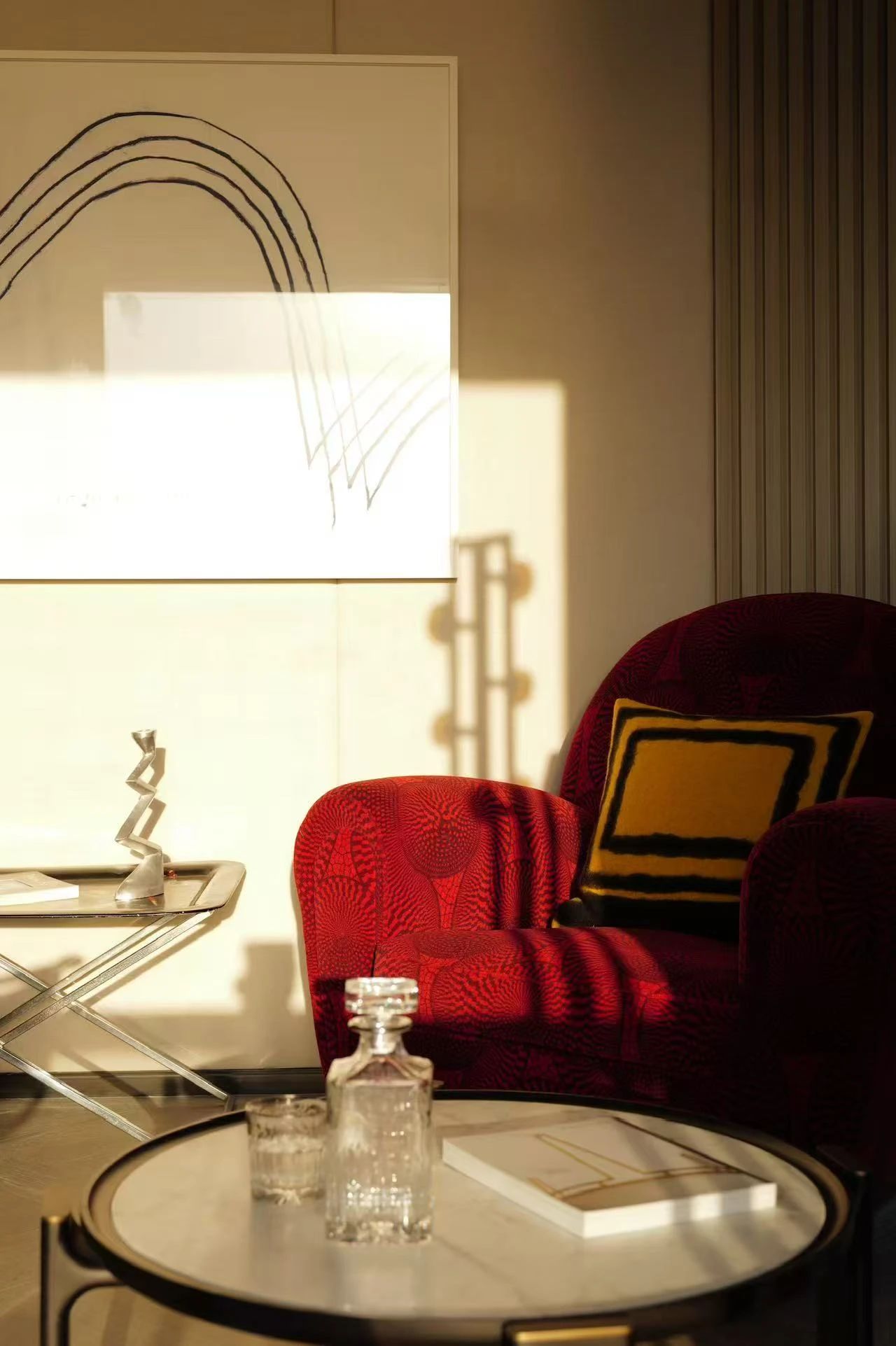Kavel K Carve
2014-04-05 01:00
© Marleen Beek
.Marleen Beek
.jpg)

‘Kavel K’位于一个三角形的地块上,被一条铁路轨道和一条连接的道路所包围。它是一个滑冰,体育和青年设施,吸引了广泛的用户群体。公共空间和建筑被设计成一个整体;正面和滑板摇篮甚至“融为一体”。
'Kavel K' is situated on a triangular plot, boxed in by a railwaytrack and a connecting road. It is a skating, sports- and youth facility which attracts a wide range of user groups. The public space and the building are designed as a unity; the facade and the skate-cradle even 'melt together'.
© Marleen Beek
.Marleen Beek
.jpg)

KavelK是最初在20世纪90年代开始的Leidschenveen-Ypenburg城市规划中规划的三座滑冰设施之一。该地点是一个典型的剩余空间;锥形地形夹在铁路轨道和连接道路之间,在荷兰最大的葡萄园社区之一的边缘。以前,这里只计划滑冰,但由于人口结构的变化,对青年中心的需求越来越大;搬到这里的年轻家庭现在有了青少年子女。
Kavel K is one of the three skate facilities that were originally planned in the urban layout plans for Leidschenveen-Ypenburg, which started in the 90s. The location is a typical surplus space; the tapered terrain is wedged between a railway track and a connecting road, at the edge of one of the largest Vinex-neighbourhoods in the Netherlands. Previously, only skating was planned here, but because of demographic changes the need for a youth centre grew; the young families that moved here now have adolescent children.


卡夫被要求同时设计设施和建筑。我们认为,创造一座与周围环境相结合的建筑是非常重要的,无论是视觉上还是功能上都是如此。但是,滑冰、体育和青年中心的设计如何能创造出一个整体呢?
Carve was asked to design both the amenities and the building. We thought it to be of great importance to create a building that presents itself as one with its surroundings, both visually and functionally. But how can skating, sports and a youth centre designed in such a way as to create a whole?
© Marleen Beek
.Marleen Beek
.jpg)

这块小块土地分为三个区:滑冰区、青年中心和体育区。通过将青年中心定位在区域的中部,创建了一个前后两面,建筑之间形成了枢纽。进入区域的两侧是溜冰设施,在地面上方半米的高度。通过提高溜冰场,沿入口区域创建坐边。此外,通过提高溜冰,可以到达入口处,而不受滑冰者的阻碍。与正面形成对比的是,背部的多功能运动鞭下陷,其边缘可用于活动。
The small strip of land is divided into three zones: skating, youth centre and sports. By positioning the youth centre in the middle of the zone, a front- and backside are created, between which the building forms the hub. The entry zone is flanked by the skate facility, which is elevated half a meter above ground. By raising the skating area, a sitting edge is created along the entry zone. Furthermore, by raising the skating, the entrance can be reached without being hindered by skaters. As a contrast to the front, the multifunctional sportscourt in the back is sunken and its edges can be used for activities.


外立面和滑冰设施的整合是设计的重要组成部分。摇篮-前侧的眼罩-被整合到正面。通过这样做,外观和滑板池成为一个整体。
The facade and the integration of the skating facility are an essential part of the design. The cradle – an eyecatcher at the front side – is integrated into the facade. By doing so, the facade and skatepool become one entity.
Floor Plan


第二个原则是认识到,表面将不可避免地喷上涂鸦。而不是把这看作一个问题,设计期待这一点。正面由大型混凝土构件组成,其中压下了“盲文图案”。涂鸦可以移除,但在凹槽的圆圈中仍然可见。因此,外观变成了画布,其中一个不断变化的颜色模式反映了历史。
A second principle was the knowledge that it is inevitable that the facade will be sprayed with graffiti. Instead of seeing this as a problem, the design anticipates on this. The facade consists of large concrete elements, in which a 'braille pattern' is pressed. The graffiti can be removed, but remains visible in the recessed circles. As a result, the facade turns into a canvas, in which an everchanging colour pattern reflects the history.
第三个原则是灵活使用建筑物,特别是其平面图。内部设计与未来的用户合作,并保持稳健和简单。核心和地板设计成鲜明的颜色,墙壁内衬耐用的衬垫板。核心周围的大滑动门创造了以各种方式划分空间的可能性。此外,这座建筑在滑冰和体育方面都有一个入口。目前,只有一个入口是开放的,但在未来两者都可以使用。在这样做时,不同的用户群体可以彼此独立地享受该设施:滑冰运动员、处于危险中的青年、接受打字课程的摩洛哥母亲和运动青少年。
A third principle was the flexibility in use of the building, and especially its floor plan. The interior was designed in collaboration with the future users, and was kept robust and simple. Core and floor were designed in a contrasting colour, the walls lined with durable underlayment panels. Large sliding doors around the core create the possibility to divide the space in various ways. In addition, the building features an entrance at both the skating and sports side. Currently, only one entrance is open, but in the future both can be used. In doing so, different user groups can enjoy the facility independently from each other; skaters, youth at risk, Moroccan mothers that get typing lessons and sporting adolescents.
© Marleen Beek
.Marleen Beek
.jpg)

最初,Kavel K被设计为一个实体。不幸的是,我们希望在使用该设施方面取得的部分成果在实施阶段遭到拒绝。从最后的设计阶段开始,该项目被分为“建筑”和“户外空间”-与两个不同的客户。这导致了建筑与外部空间分界线上的持续斗争。未经任何协商,客户改变了建筑内部的设计。大型滑动门被标准门取代,墙壁传统上被抹灰。这并不是出于预算方面的原因-所有的变动都是“预算中立”的,但却导致了一座使用起来不那么灵活的建筑。
Originally, Kavel K was designed as one entity. Unfortunately, part of what we wanted to achieve in the use of the facility, was rejected in the implementation phase. From the Final Design phase onwards, the project was divided into 'the building' and 'outdoor space' – with two different clients. This resulted in a continuous struggle on the demarcation line between the building and the exterior space. Without any consultation, the client made changes in the design of the interior of the building. The large sliding doors were replaced by standard doors, and the walls have been traditionally plastered. This was not motivated by budgetary reasons - all changes are 'budget neutral', but resulted in a building which is much less flexible in use.
© Marleen Beek
.Marleen Beek
.jpg)

尽管有这个缺陷,Kavel K还是被急切地使用了。户外活动和建筑的独特结合创造了一种可能性,即不主要关注处于危险中的青年,而是为通常不需要任何指导和支持的青少年提供服务。青年中心为可在此服务的青年工作者提供服务。然而,Kavel K最大的优点是不同用户和年龄组的轻松结合,在这个年轻地区的边缘促进了积极的活动。
Despite this flaw, Kavel K is eagerly being used. The unique combination of outdoor activities and building created the possibility to not primarily focus on the youth at risk, but also to serve youngsters that normally don't need any guidance and support. The youth centre accommodates youth workers who can serve the district from here. The greatest merit of Kavel K, however, is the relaxed mix of diverse user and age groups, catalysing positive activity on the edge of this young district.


.jpg)

.jpg)

.jpg)

.jpg)

.jpg)

.jpg)

.jpg)

.jpg)

.jpg)

.jpg)

.jpg)

.jpg)

.jpg)

.jpg)































Architects Carve
Location The Hague, The Netherlands
Category Skatepark
Carve Team Elger Blitz, Mark van der Eng, Thomas Tiel Groenestege, Emma Kaul, Thijs van der Zouwen, Hannah Schubert
Area 1650.0 sqm
Project Year 2014
Photographs Marleen Beek
























